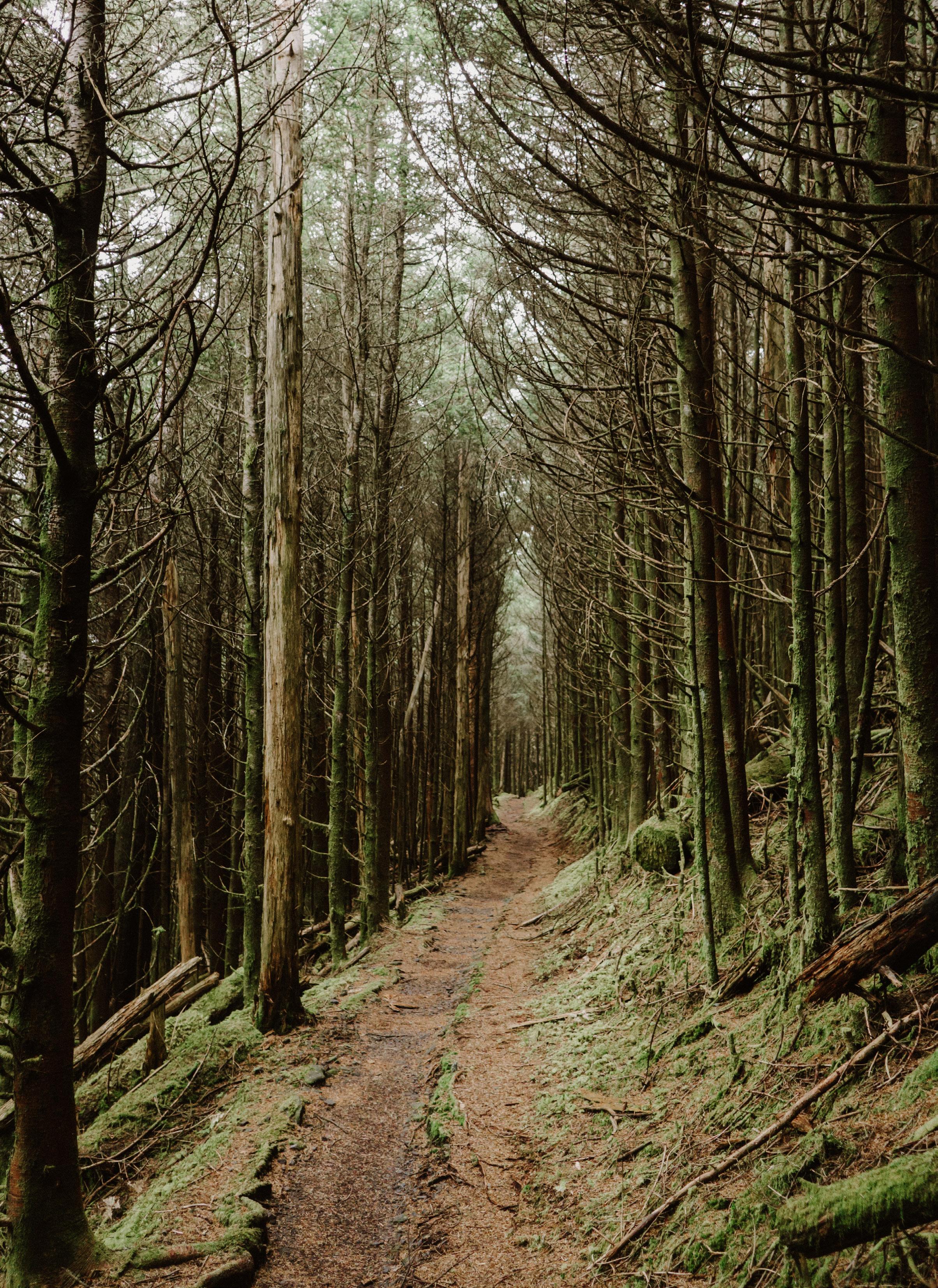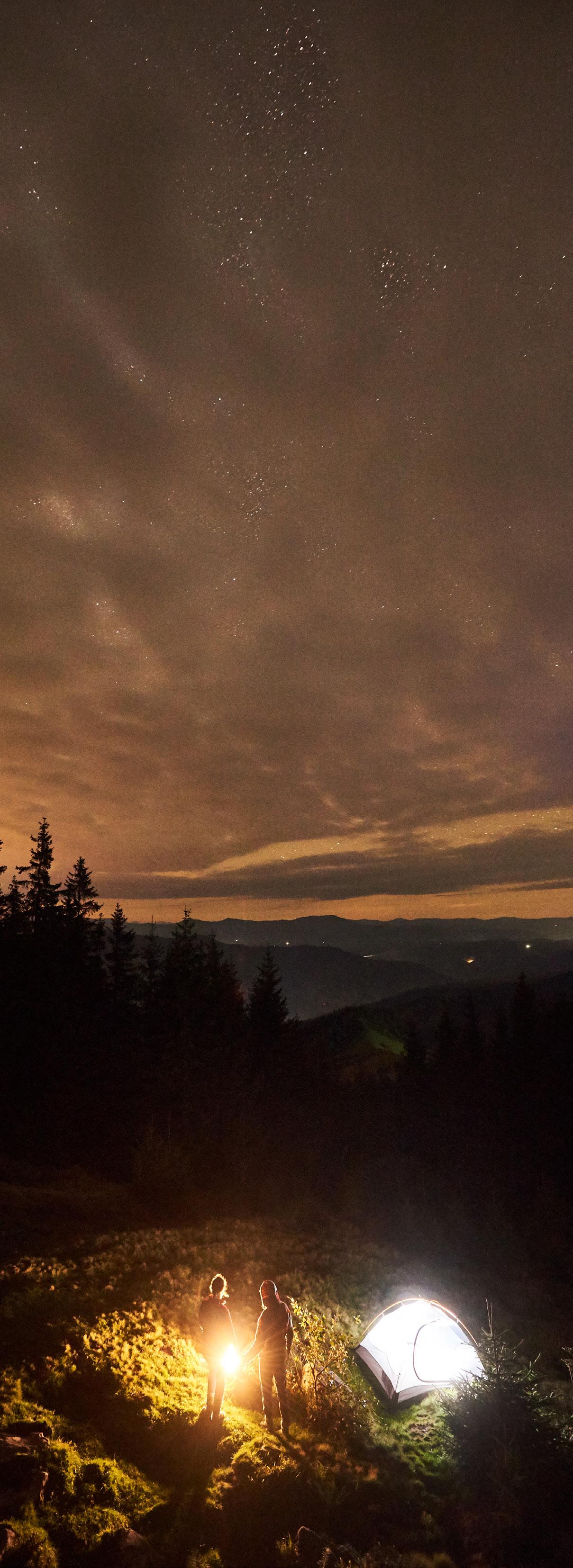
5 minute read
23 TALES OF WESTERN NORTH CAROLINA LORE & LEGENDS
One of the best parts of our job is that we regularly get to introduce people to the area and share the stories behind our vibrant, one-of-a-kind communities. This year, we will be showcasing a total of 23 Tales of Western North Carolina in our magazine. We hope you enjoy this story-telling series and that by the end of the year everyone feels like a local!
Legend of the Boojum
The legend of Boojum began in the 1900’s, when reports of the creature were made in Haywood County. The shaggy, grey-haired creature was described as part man, part beast. Clocking in at eight feet, locals aptly referred to him as the big foot of North Carolina.
Boojum purportedly had two loves. His first love was that of precious gems including rubies, amethysts, emeralds, and sapphires native to the area. According to legend, he placed his gems at the bottom of stone jugs and drowned them in moonshine. If ne’er-do-wells came upon his loot, they would be stumbling drunk before they could make off with his gems.
Boojum’s second love was Annie, a curious human girl who fell for him. When he had been gone too long on a treasure hunt, Annie would search the woods by a hootin' and a holleriin'. He would respond in kind until they found each other again. Some rumor you can still hear them in the woods today.
Click here to learn more and next time you’re in Waynesville stop by the popular craft brewery, Boojum Brewing.

Madstones
Rubies, emeralds, and sapphires coveted by Boojum are not the only precious stones renowned in North Carolina folklore. While much less assuming treasures, madstones were go-to home remedies for ailments in the area’s early settlements. These porous stones are most often extracted from animals and were believed to have healing qualities as well as bear good fortune to their keepers. Frequently used to suction out venom and poisons, it makes sense that their nomenclature stems from the belief that the stones prevent rabies if bitten by a rabid animal. So, next time you are out for a hike in the Smoky Mountains, be sure to keep a close eye out for your own apothecarial prize stone.
“The Duke” of Asheville
In 1902, a mysterious Englishman going by the name of Mr. Charles J. Asquith arrived in Asheville, TN. His dapper attire made quite an impression but couldn’t conceal his rapidly declining health. While a local nurse treated him for what was likely tuberculosis, town gossips conjectured he was of English nobility and the holder of great wealth.
Such musings were short lived, as was the remainder of his life. He passed away after just three weeks of care. In a surprise twist, it turned out he was penniless and in debt. The mayor demanded that Asquith be embalmed and held indefinitely until his family came to claim and pay for him. That set off a seven-year stretch during which Asquith resided at Noland-Brown Funeral Home on Church Street, was occasionally taken on parade, and shockingly used as a ploy in a few practical jokes.
The Duke’s fate was not yet sealed. In 1910, Mrs. T. J. Summerfield came into town asserting she was his sister-in-law. She explained Asquith was a pseudonym for Sidney Lascelles, who had a colorful history as a con artist. She came to lay claim and transport him to Washington D.C. where he was to be cremated. After signing an affidavit and posting bond, Summerfield took her prize possession and boarded a northbound train.
Gone, but not forgotten, inquiries were later made from Asheville as to The Duke's final resting place. The closure they sought was to be forever denied. Mrs. T. J. Summerfield never returned to her self-proclaimed home in Baltimore nor was there any record in Washington D.C. of Sidney Lascelles being cremated. The mystery of The Duke’s remains continues to this day.

The Giant Yellow Jacket
From the Cherokee, we learn of a legendary creature that once tormented people living in the Nantahala Forest. The Nantahala River cuts a deep gorge in the forest and at the bottom of that is a hidden cave that once harbored a giant yellow jacket called U'lag‘û.
U'lag‘û means "the Boss" in Cherokee, and this formidable creature was the size of a house. It moved so quickly that even the greatest warriors couldn’t slay the beast with their arrows. When brawn failed, the Cherokee turned to clever wits and sprang a trap. They enticed U'lag‘û with prey tied to a string and then followed the string back to the creature’s cave. They covered the entrance with brush and set a fire that saturated the cave with lethal plumes of smoke. U'lag‘û perished along with several cohabitants of tiny yellow jackets. Some of the tiny ones escaped, which according to legend are the ancestors of the yellow jackets we see today.
Brown Mountain Lights
We end this segment with an unexplained phenomenon, the Brown Mountain Lights. Stories of lights first appearing over Brown Mountain date back to 1833. Under the right conditions, as the sun sets, bright, multicolored and various sized lights appear over the mountain range. While the U.S. Geological Survey and National Geographic Society have suggested possible scientific explanations for the phenomenon, to-date there is no official explanation. Want to see for yourself? The Blue Ridge Parkway has a marked viewing site at the Lost Cove overlook.

Thirsty for more legends & lore?
Check out our previous issue of Mountain Time in the Smokys to read more.










